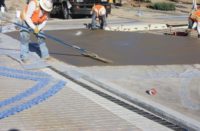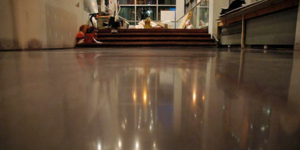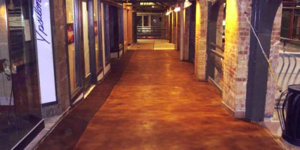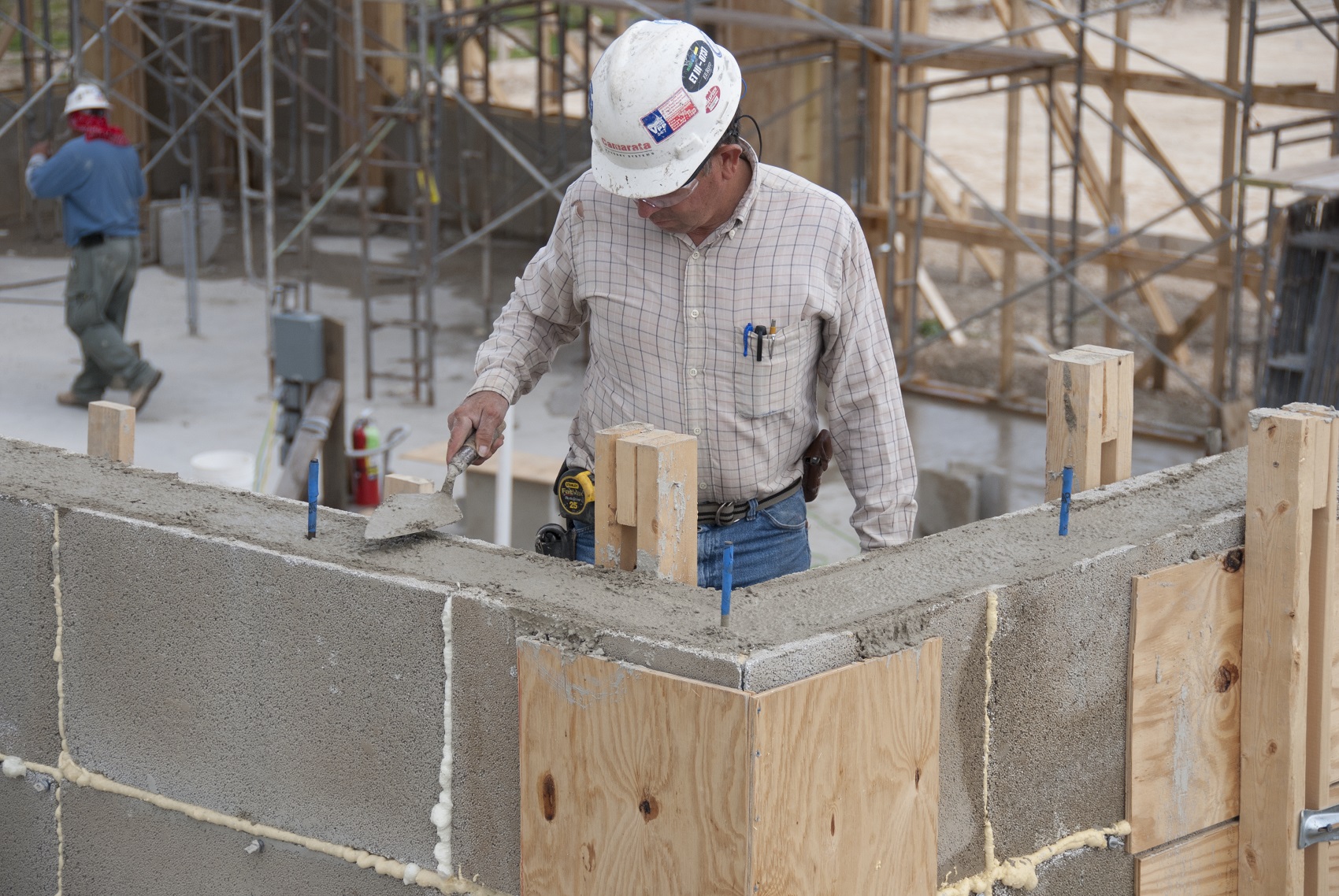
Concrete walls are a common choice in both commercial and residential buildings or rooms where soundproofing is important. The sheer thickness and durability of concrete often leaves many thinking it must be the best material choice for blocking sound, but this actually isn’t quite true.
While concrete walls do offer many benefits, if you want true soundproofing you’re going to need to include other materials or construction methods. The sheer mass of a wall isn’t what is going to prevent sounds from bleeding out or in, but rather it’s the air gaps within a wall that will trap noise. Ideally, this need for creating an air gap will be addressed during the construction of a new concrete wall, but there are other ways of improving soundproofing, even on existing walls.
Sound Reducing Wall Coatings
Sound reducing wall coatings or sound dampening coatings are great choices for existing interior and exterior walls. This type of industrial coating helps prevent sound transfer and is ideal for both commercial and residential buildings. There are also plenty of different materials to choose from.
Some wall coatings look and apply very much like wallpaper, with the sound reduction coming from both the paper itself as well as a special adhesive. You can leave these wallpapers as is, but generally you’ll want to paint or even put more decorative wallpaper over them.
Other wall coatings are painted on, such as actual paint or special polyurethane resins. Sound reducing paints are clearly marked as such and are a great choice for the interior of residential rooms that need a better sound barrier. Polyurethane resins aren’t as easily applied, as it requires specific mixing of two parts, but remains a good choice for commercial buildings when applied by a professional.
Stucco or a decorative concrete overlay can also be applied to existing concrete walls. This added thickness and texture is better at blocking sound, coming from either direction, than a flat, bare concrete wall.
Soundproof Drywall
Bare concrete walls can greatly benefit from an additional layer or leaf of wall added along with an air gap. This air gap between the interior and exterior wall is actually what stops sound from passing through. Doing this can easily be done on new or existing remodels by creating an interior wall constructed of special soundproof drywall.
This specially constructed drywall differs from normal drywall in terms of sound reduction thanks to a triple-layer composition. These drywall panels consist of two layers of traditional 1/4 inch drywall or sheetrock sandwiched with a rubber-like middle layer. Using this drywall is exceptionally effective and versatile enough for really any application, from a basement remodel to construction of new classrooms.
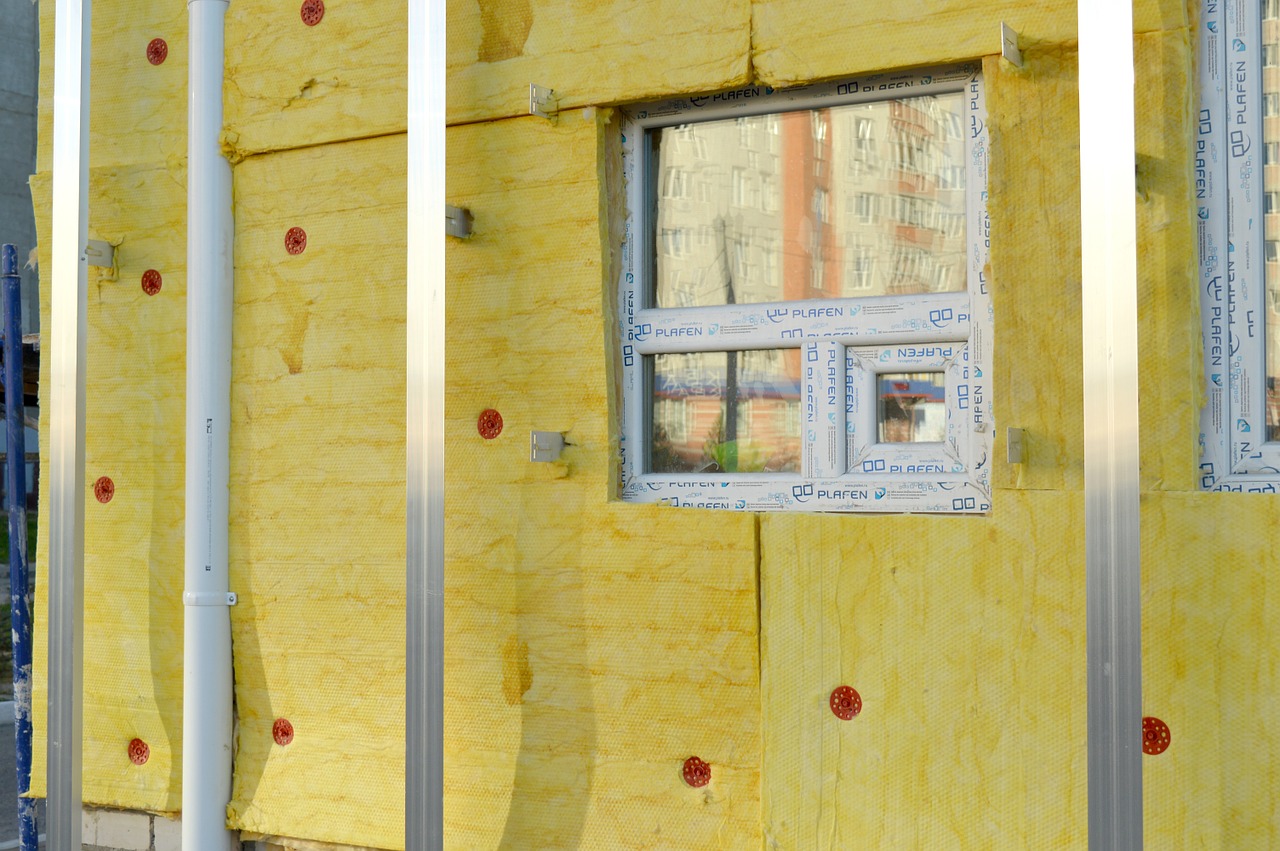
Blanket Insulation
Blanket insulation is not a new product in commercial or residential construction, but is a very effective option for aiding in soundproofing a room or building. There are a few options to choose from for blanket insulation – either interior or exterior use and sound absorbing, sound blocking or combination insulation. You can also find even more specialized blanket insulation materials that are impregnated and/or coated with silicone for impressive heat resistance.
Blanket insulation can be a permanently installed feature in a room or used temporarily. Commercial/industrial buildings may find hung blanket insulation more useful, especially if soundproofing isn’t going to be permanently needed in one room but may need to be moved to another location.
Acoustic Slab
Acoustic slab is an excellent way of adding soundproof insulation during new wall construction. This material isn’t your typical run-of-the-mill insulation, but rather is a specially designed insulation blend that is made to placed within walls or wall block systems as you would with normal insulation.
Composition will vary between manufacturers, but most acoustic slab is often a blend of wool, glass and mineral fibers. They are most commonly used within walls, but can also be used within ceilings and floors. The best manufacturers will use recycled glass and a wool blend that is naturally fire-resistant. As a bonus, acoustic slab insulation also offers low thermal conductivity and can easily be used in place of normal insulation. In fact it is often easier to work with and less messy than traditional insulation products.
Alternative Wall Materials
While not always an option for existing buildings, new construction or remodels that require soundproofing are an excellent opportunity to consider using an alternative wall system. Naturally the goal of soundproofing walls is more achievable if the walls themselves also have sound-reducing properties, as this requires less work later to add sound blocking in the other ways discussed.
Insulated concrete block wall systems are an ideal choice for creating soundproofed walls, both interior and exterior, though ICB are generally used on the exterior. ICB walls offer far better noise control compared to solid concrete walls as well as traditional wood-framed walls. Similar to acoustic slab, insulated concrete blocks also have other benefits aside from acoustic. They are more resilient in areas prone to storms, offer better temperature and moisture control, and have better energy efficiency. This combined with being able to absorb sound better really make ICB a great choice.
Soundproofing concrete walls is necessary for the best protection against outside noise pollution and blocking sound bleeding from one room in a building. There are so many options for soundproofing concrete walls that there is likely a combination of different materials that can be added before or after construction, regardless of whether it’s a residential home wanting basic outside noise protection or a commercial building that needs serious soundproofing due to loud machinery.
Disclaimer: The statements and opinions expressed in this blog post are those of the author or authors and do not necessarily reflect the position or opinion of Concrete Decor magazine.

